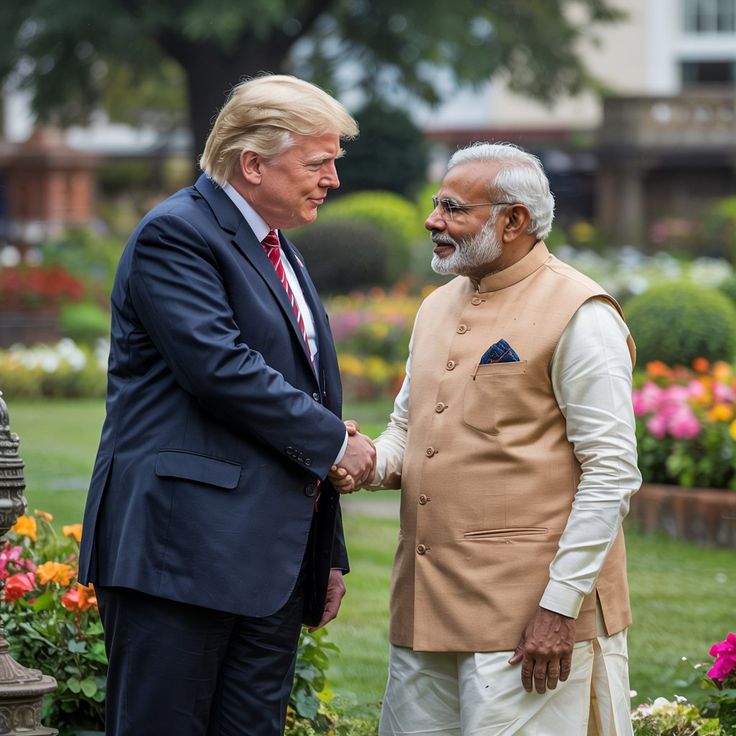President Donald Trump has given the Alaska Summit with Russian President Vladimir Putin a 75% probability of success—and a 25% chance of failure—in a rare display of political candor. Those odds might not seem perfect, but in the unpredictable arena of global politics, they’re unusually optimistic.

A Meeting Ten Years in the Making
The world watched closely on August 15, 2025, as Putin stepped onto U.S. soil for the first time in a decade, greeted not by hostile stares but by the cold, crisp air of Anchorage, Alaska. The venue—Joint Base Elmendorf-Richardson—was a deliberate choice, far from Washington’s political theater and symbolic of a neutral, remote ground for high-stakes diplomacy.
The last time Putin attended a bilateral summit in the U.S. was in 2015. A lot has changed since then—wars ignited, alliances shifted, and the U.S.-Russia relationship strained under sanctions, military standoffs, and mutual distrust.
This meeting wasn’t just another handshake for the cameras—it was a gamble to end one of the most devastating European conflicts in decades: the war in Ukraine.
Putin’s Rare Compliment
Hours before the two leaders sat down, Putin surprised both allies and critics by praising Trump’s role in pushing for peace. Calling the U.S. president’s work “energetic and sincere,” Putin signaled a rare willingness to acknowledge American efforts without adding his usual political jabs.
For seasoned Russia-watchers, such language was notable. Putin doesn’t hand out compliments to adversaries lightly. This could mean he sees genuine potential in these talks—or that he’s setting a diplomatic tone to strengthen his own bargaining position.
Why the Odds Matter
Trump’s candid assessment of the summit’s chances—three out of four in favor of success—is unusual in diplomatic circles, where leaders often speak in vague, hopeful terms.
That number tells us two things:
There’s genuine momentum. You don’t put your personal credibility on the line with such a statistic unless you believe progress is possible.
There’s still risk. The 25% failure rate looms large, especially given that peace negotiations in this war have collapsed multiple times over the last three years.
For the public, it humanizes the process. It’s not about grand, untouchable agreements—it’s about two leaders taking a calculated shot at stopping the bloodshed.
What’s on the Table?
- Ukraine Ceasefire – Trump has made it clear that a ceasefire is his top priority, even saying, “We want it today, not tomorrow.” That sense of urgency reflects the mounting civilian toll and the political advantage of ending a war before another winter sets in.
- Territorial Discussions – The war has redrawn maps in Eastern Europe, and any peace deal will need to address who controls contested regions. This is the most sensitive topic and one where both sides have historically dug in their heels.
- Nuclear Arms Control – Putin has hinted that if relations improve, discussions could extend to reviving arms control agreements like the New START Treaty, which limits strategic nuclear weapons.
- Economic Openings – While sanctions remain, there’s room for talks on targeted cooperation—particularly in energy and humanitarian sectors.
Security and Symbolism
For the state, Anchorage’s level of protection was unheard of. More than 32,000 personnel from military and law enforcement agencies were deployed. Airspace was restricted, naval assets were on alert, and electronic counter-surveillance systems were active across the city.
This wasn’t just about safety—it was about optics. The U.S. wanted to show that it could host a major diplomatic event securely, even with one of the most polarizing figures in global politics on its soil.
The Missing Third Chair
While Trump has suggested that a second meeting could bring Ukraine into the room, the lack of direct representation from Kyiv has sparked concern in Europe. Leaders worry that Ukraine’s interests might be compromised in the name of quick progress.
Some analysts see this as a calculated move: get a U.S.-Russia framework in place first, then bring Ukraine to the table to negotiate details. Others call it a dangerous precedent—deciding the fate of a sovereign nation without its participation.
Pre-Summit Warm-Up: Prisoner Exchange
Only a few days before they reached Alaska, Russia and Ukraine exchanged 84 prisoners. While small in scale compared to the scope of the war, it was a rare cooperative gesture.
For diplomats, it was a “confidence-building measure”—a way to show that even in the middle of a war, both sides can take small steps toward trust.
Putin’s Playbook
Veteran diplomats have warned that Putin is a master at using personal diplomacy to achieve strategic aims. By meeting in Alaska, he sidesteps the optics of a traditional state visit and presents himself as an equal partner, not a guest.
His praise for Trump could be genuine, but it also works as a tool to put Trump in a more receptive mood. The former KGB officer has used flattery and rapport-building effectively in past negotiations, from Europe to the Middle East.
Trump’s Gamble
For Trump, the Alaska Summit is more than a foreign policy challenge—it’s a political opportunity. If he can deliver even a partial ceasefire, it could redefine his presidency and bolster his image as a dealmaker on the global stage.
But failure comes with risks: critics will say he legitimized Putin without getting real concessions, and allies may see it as a weakening of Western resolve.
Global Reactions
Europe: NATO leaders have expressed cautious optimism but remain wary of any agreement that might freeze the conflict on terms favorable to Russia.
China: Paying close attention because the result may affect Beijing’s own strategic planning with the United States.
Middle East & Africa: Leaders see the summit as a test of whether global powers can resolve conflicts diplomatically rather than through prolonged proxy wars.
Why Alaska?
Organizing the conference in Alaska was a symbolic act as much as a practical one. Alaska is closer to Russia than any other U.S. state, yet it remains deeply tied to American identity. It sends the message: “We can meet halfway, but on our terms.”
For both leaders, the snowy landscape offered a neutral, less politically charged backdrop than Washington or Moscow would have.
The Path Ahead:
- If the summit delivers on its 75% success projection, we could see:
- An immediate ceasefire in specific frontline regions.
- A commitment to begin broader talks involving Ukraine within 30 days.
- A joint statement on reducing nuclear escalation risks.
- If it falls into the 25% failure category, expect:
- Increased U.S. sanctions on Russia.
- A surge in military aid to Ukraine.
- Heightened diplomatic tension, with fewer opportunities for dialogue in the near future.
The Human Side of Statistics
Numbers like “75%” and “25%” might seem cold, but they represent something deeply human: hope measured against hard reality. Families in bomb shelters, children growing up with sirens, and warriors in trenches are among the lives at stake for every percentage point.
That’s why, beyond the political theater, this summit matters. It’s not just a page in a diplomatic playbook—it’s a potential turning point in a war that has already taken tens of thousands of lives.
Closing Thoughts:
The Alaska Summit is a rare convergence of high stakes, candid odds, and unusual setting. A diplomatic moment that feels both fragile and optimistic is created by Trump’s gamble, Putin’s admiration, and the likelihood of success of 75%.
Whether this meeting becomes a footnote or a milestone in history depends on what happens behind closed doors in Anchorage—and whether those odds hold true in the real world.
Until then, the world waits, watches, and hopes that the math of peace beats the statistics of war.
Related News: Read Here


